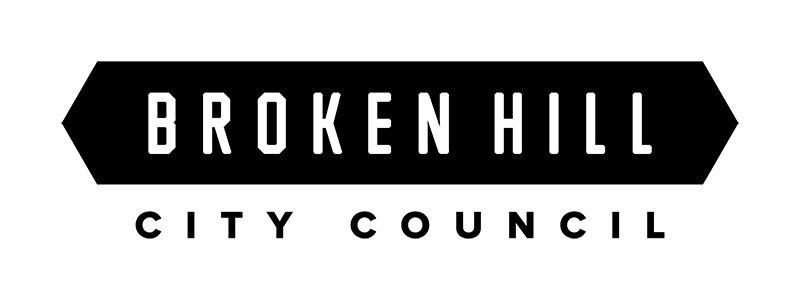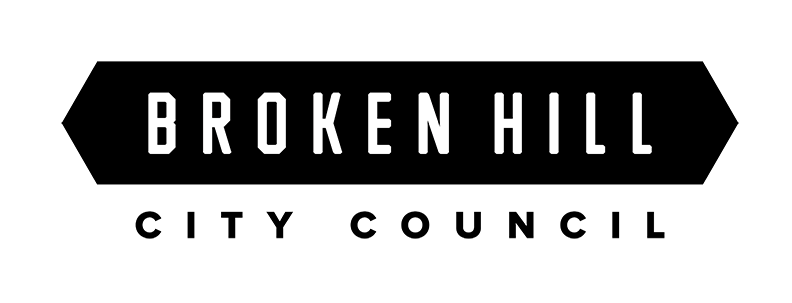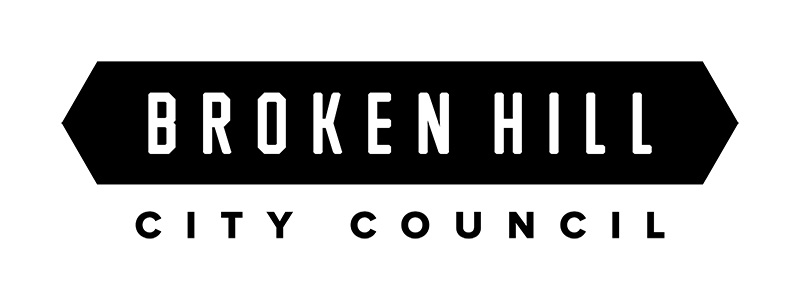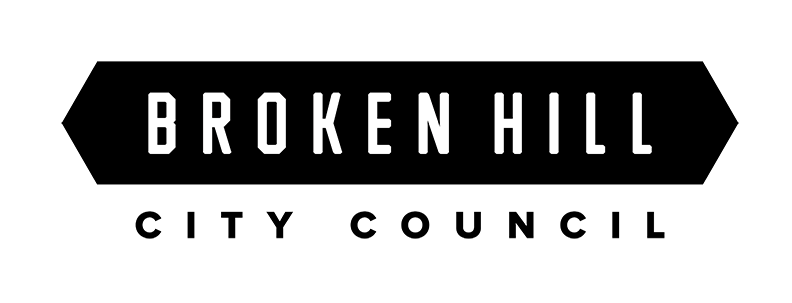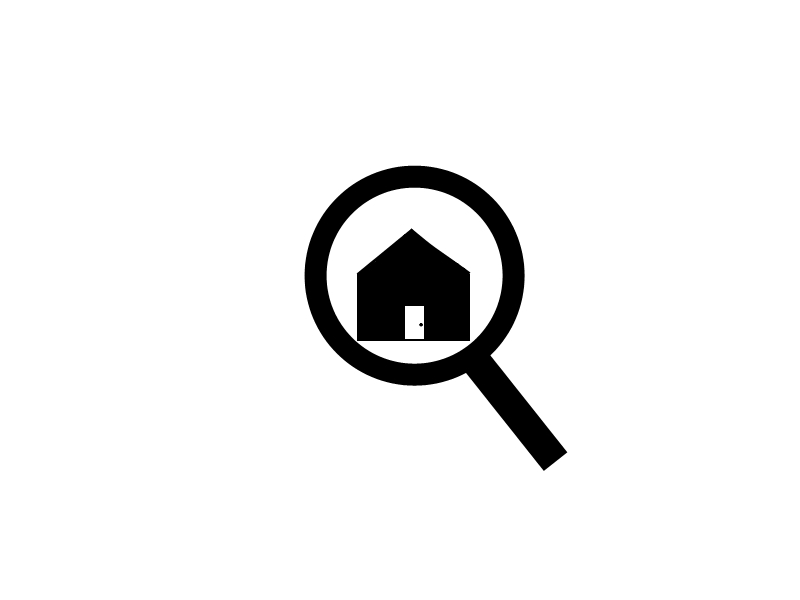Title Page
-
Application Reference
-
Proposal Address
-
Prepared by
-
Building assessed
-
What class(es) of building is being assessed that will result from the proposed work?
-
There is no DTS provision for P2.2.4 Drainage from swimming pools. A Performance Solution is required.
-
P2.2.4 Drainage from swimming pools
A swimming pool must have adequate means of draining the pool in a manner which will not—
(a) cause illness to people; or
(b) affect other property. -
There is no DTS provision for P2.7.6 Private bushfire shelters. A Performance Solution is required.
-
P2.7.6 Private bushfire shelters
A private bushfire shelter must be designed and constructed to provide a tenable environment for occupants during the passage of untenable conditions arising from a bushfire event, appropriate to the—
(a) location of the private bushfire shelter relative to fire hazards including—
(i) predominant vegetation; and
(ii) adjacent buildings and structures; and
(iii) allotment boundaries; and
(iv) other combustible materials; and
(b) occupancy of the private bushfire shelter; and
(c) bushfire intensity having regard for the bushfire attack level; and
(d) fire intensity from adjacent buildings and structures, allotment boundaries and other combustible materials; and
(e) ready access to the private bushfire shelter from the associated dwelling and occupant egress after the fire; and
(f) tenability within the private bushfire shelter for the estimated maximum period of occupancy; and
(g) generation of smoke, heat and toxic gases from materials used to construct the private bushfire shelter; and
(h) structural and fire loads and actions to which it may reasonably be subjected, appropriate to—
(i) the topography between the private bushfire shelter and the predominant vegetation or other fire hazards; and
(ii) the distance between the private bushfire shelter and the predominant vegetation or other fire hazards; and
(iii) the size of the potential fire source and fire intensity; and
(iv) wind loading; and
(v) potential impact from debris such as falling tree limbs; and
(i) degree of external signage identifying the location of the private bushfire shelter; and
(j) degree of internal signage identifying the design capacity and maximum period of occupancy; and
(k) degree of occupant awareness of outside environmental conditions; and
(l) degree of essential maintenance. -
Note: This assessment tool is only in relation to the Deemed-to-Satisfy (DTS) provisions of volume 2 of the National Construciton Code 2019 (NCC 2019).
Where a performance solution is used or proposed, this tool is not suitable.
Users should independently check that all the relevant Performance Requirements are met.
In some cases, there may be relevant provisions in Volume 1 of the NCC that need consideration. For example, access requirements for people with a disability in class 1b, 10a and 10b. -
A Deemed-to-Satisfy Solution can show compliance with the Deemed-to-Satisfy Provisions through one or more of the following Assessment Methods:
(a) Evidence of suitability in accordance with Part A5 that shows the use of a material, product, plumbing and drainage product, form of construction or design meets a Deemed-to-Satisfy Provision.
(b) Expert Judgement.
Regulation checks
-
Has application for CC been made in writing (check for form)
-
Has application been made by a person who is eligible to appoint a principal certifying authority for the relevant development?
-
Will the development affect an existing building?
-
An inspection of the existing building must be carried out (Clause 143B EP&A Reg 2000).
-
What class(es) of building is the existing building(s)?
- 1a - dwelling
- 1b - boarding house or short-term accommodation
- 2 - two or more SOU dwellings
- 3 - other residential building
- 4 - dwelling part of 5, 6, 7, 8 or 9
- 5 - Office building
- NSW 6 - shop
- 7a - carpark
- 7b - storage, or wholesale
- 8 - Laboratory/workshop/factory
- 9a - Health-care building
- 9b - Assembly building
- 9c - residential care building
- 10a - non-habitable building
- 10b - structure (mast/retaining wall/pool etc)
- 10c - private bushfire shelter
-
Please check that the building work under assessment is class 1a/10. This checklist is not suitable for use in class 2-9 buildings.
-
Is the value of the building works equal to or more than $25,000?
-
Has the Long Service Levy been paid?
-
Are there conditions on the consent that must be satisfied before a Construction Certificate can be issued?
-
Have these conditions been satisfied?
-
Is there a planning agreement in place in relation to the development?
-
Are there requirements of the agreement that are required to be complied with before a construction certificate for building work or subdivision work is issued?
-
Have these conditions been satisfied?
-
What class(es) will the building be upon completion of the building work?
- 1a - dwelling
- 1b - boarding house or short-term accommodation
- 2 - two or more SOU dwellings
- 3 - other residential building
- 4 - dwelling part of 5, 6, 7, 8 or 9
- 5 - Office building
- NSW 6 - shop
- 7a - carpark
- 7b - storage, or wholesale
- 8 - Laboratory/workshop/factory
- 9a - Health-care building
- 9b - Assembly building
- 9c - residential care building
- 10a - non-habitable building
- 10b - structure (mast/retaining wall/pool etc)
- 10c - private bushfire shelter
-
Is the building proposed to have a total floor area of 2,000 square metres or more?
-
Do the plans and specifications provide for an alternative solution to meet the performance requirements contained in any of the Category 2 fire safety provisions? (that is CP9, EP1.3, EP1.4, EP1.6, EP2.2 or EP3.2)
-
Referral to the Fire Commissioner is required within 7 days of receipt (clause 144, EP&A Reg 2000).
-
Is the building proposed to have a fire compartment with a total floor area of more than 2,000 square metres?
-
Do the plans and specifications provide for an alternative solution to meet the performance requirements contained in any of the Category 2 fire safety provisions? (that is CP9, EP1.3, EP1.4, EP1.6, EP2.2 or EP3.2)
-
Referral to the Fire Commissioner is required within 7 days of receiving the CC application (Clause 144, EP&A Reg 2000)
-
Is the building proposed to have a total floor area of more than 6,000 square metres?
-
Do the plans and specifications provide for an alternative solution to meet the performance requirements contained in any of the Category 2 fire safety provisions? (that is CP9, EP1.3, EP1.4, EP1.6, EP2.2 or EP3.2)
-
Referral to the Fire Commissioner is required within 7 days of receiving the CC application (Clause 144, EP&A Reg 2000)
-
How many storeys is the building?
-
Do the plans and specifications for the work provide for an alternative solution to meet performance requirement CP2, to the extent that it relates to external combustible cladding?
-
Does the alternative solution apply the verification method CV3 in Volume 1 of the Building Code of Australia in its entirety?
-
Referral to the Fire Commissioner is required within 7 days of receiving the CC application (Clause 144, EP&A Reg 2000)
-
How many storeys is the building?
-
Do the plans and specifications provide for an alternative solution to meet performance requirement CP2 , to the extent that it relates to external combustible cladding?
-
Does the alternative solution apply the verification method CV3 in its entirety?
-
Referral to the Fire Commissioner is required within 7 days of receiving the CC application (Clause 144, EP&A Reg 2000)
-
Does the building work involve an alternative solution in respect of a fire safety requirement?
-
Has an alternative solution report been obtained or provided?
-
An alternative solution report must be obtained or provided (clause 144A, EP&A Reg 2000)
-
Was the report prepared by or on behalf or a person with the qualifications required by clause 144A of the EP&A Reg 2000?
-
Does the report include a statement that the alternative solution complies with the relevant performance requirements of the Building Code of Australia
-
Does the report where relevant, identify the deemed-to-satisfy provisions of the Building Code of Australia being varied?
-
Does the report describe and justify the alternative solution, including the acceptance criteria and parameters on which the justification is based and any restrictions or conditions on the alternative solution
-
Does the report include a copy of the brief on which the justification of the alternative solution is based?
Satisfaction of Certifier
-
Are you satisfied that the report correctly identifies both the performance requirements and the deemed-to-satisfy provisions of the Building Code of Australia?
-
Are you satisfied that the plans show, and the specifications describe, the physical elements of the alternative solution (where they are capable of being shown and described)?
-
The inspection must include an inspection of the parts of the building affects and the egress routes from those parts (Clause 143B, EP&A Reg 2000).
-
Is there a BASIX certificate or certificates for the development?
-
Do the plans and specifications for the building include the matters required by each relevant BASIX certificate? (clause 145(1)(a1) EP&A Reg 2000)
-
Is the design and construction of the building or subdivision work (as depicted in the plans/specs/info supplied) consistent with the development consent? (Clause 145 (1)(a) EP&A Reg 2000)
-
In addition to the matters dealt with by this checklist, the proposed building (unless a temporary building) must comply with the relevant requirements of the Building Code of Australia. (refer clause 145 (1)(b) of the EP&A Reg 2000)
3.1 Site Preparation
Part 3.1.2 - Earth Retaining Structures
-
Are earth retaining structures proposed/required?
-
Is a Structural Engineer's certificate provided for the earth retaining structures referencing AS 4678?
-
NOTE: AS 4678 is only one way of complying with the relevant performance requirement. Other DTS solutions may involve the other manuals or methods elsewhere in Part 3.
-
What is required to demonstrate or achieve compliance (if necessary)?
Part 3.1.3 - Drainage
-
Compliance with this part demonstrates compliance with P2.2.1 - Rainwater management, which reads:
P2.2.1 Rainwater management
(a) Surface water, resulting from a storm having an average recurrence interval of 20 years and which is collected or concentrated by a building or sitework, must be disposed of in a way that avoids the likelihood of damage or nuisance to any other property.
(b) Surface water, resulting from a storm having an average recurrence interval of 100 years must not enter the building.
Limitation:
P2.2.1(b) does not apply to a Class 10 building where in the particular case there is no necessity for compliance.
(c) A drainage system for the disposal of surface water resulting from a storm having an average recurrence interval of—
(i) 20 years must—
(A) convey surface water to an appropriate outfall; and
(B) avoid surface water damaging the building; and
(ii) 100 years must avoid the entry of surface water into a building. -
Drainage systems/provisions are required where:
1. The development has a roof and underground drainage is to be used (or required by the consent); or
2. There is potential for soil moisture to cause problems (e.g. basements, retaining walls, high water tables, etc); or
3. There is any potential for surface water to run on land adjoining or under a building. -
Is a drainage system proposed/required?
-
The 5min duration rainfall instensities for Broken Hill are: In Table 3.5.3.1a of NCC2019: for ARI 20- 143mm/h; for ARI100- 219mm/h. In Table E1 of AS/NZS 3500.3-2018: for ARI20 (5%AEP) 142mm/h; for ARI100 (1%AEP) 217mm/h.
-
Do the plans/specifications reference AS/NZS 3500.3?
-
Is compliance acheived via AS/NZS 3500.3 or the Acceptable Construction Practice (3.1.3.1-3.1.3.5)?
- Acceptable Construction Manual
- Acceptable Construction Practice
- Compliance not demonstrated
-
What is required to demonstrate or achieve compliance?
Termite Risk Management
-
Is a primary building element considered susceptible to termite attack?
-
Is a termite management system compliant with 3.1.4.3 indicated?
- Compliant
- Non-Compliant
- N/A
-
Is it indicated that a durable notice in accordance with 3.1.4.4 will be installed?
3.2 Footings and Slabs
-
Is a footing or slab required/proposed?
-
Do the footings/slab design intend to comply via the Acceptable Construction Manuals or the Acceptable Construction Practice?
- Acceptable Construction Manual
- Acceptable Construction Practice
- Compliance not demonstrated
3.2.1 Scope of ACP
-
Is the soil class of the site A, S, M, M-D, H or H-D?
-
This is outside the scope of the Acceptable Construction Practice.
-
Is the slab not more than 30 m long?
-
Does the slab contain permanent joints (e.g: construction joints)?
-
How many trafficable floors does the structure the footing is supporting contain?
-
This is outside the scope of the Acceptable Construciton Practice.
-
Does the footing support any wall with a height exceeding 8 m (excluding any gable)?
-
Does the footing support more than one slab?
-
Does the building incorporate any wing walls or masonry arches?
-
Are the wing walls or masonry arches detailed in accordance with TN61?
-
Do any single leaf earth or stone masonry walls exceed 3 m in height?
-
Is the site "normal" (refer to 3.1.1 and AS 2870)?
-
Is the site in an alpine area?
3.2.2 Preparation
-
Does any fill proposed under a slab comply with 3.2.2.2?
-
Does the slab edge support for a sloping site comply with 3.2.2.4?
-
Are any stepped footings detailed in accordance with 3.2.2.5?
-
Is a damp-proofing membrane compliant with NSW3.2.2.6 indicated?
-
Are edge rebates detailed to be compliant with 3.2.2.7?
3.2.3 Concrete and Reinforcing
-
Does the concrete specification comply with 3.2.3.1?
-
Does any steel reinforcement detailing comply with 3.2.3.2?
3.2.5 Fooring and slab construction
-
Is shrinkage control provided in accordance with 3.2.5.3?
-
Does any edge rebate more than 150mm in depth comply with 3.2.5.4?
-
Do any fireplace footings comply with 3.2.5.5 (A and S sites only)?
-
Do any stump footing details comply with 3.2.5.6?
-
Is there a stiffened raft slab proposed?
-
The following questions relate to tables 3.2.5.5 and the respective figures.
-
Is the footing depth appropriate?
-
Is any bottom/top reinforcement specified correctly?
-
Is the maximum spacing of beams within the acceptable limits?
-
Is the appropriate slab mesh specified?
-
Are there strip footings proposed?
-
Do the dimensions and reinforcement comply with tables 3.2.5.7 as applicable?
-
What is required to demonstrate or achieve compliance?
-
Is the design based on standard designs (Section 3 of AS2870) or Engineering principles?
Scope of standard designs
-
Is the Soil Class E or P?
-
Standard designs cannot be used on class E or P sites.
-
Is the building 30m or less in length?
-
Is the slab free of any permanent joints (such as contraction or control joints)?
-
How many storeys is the construction?
-
Construction of 3 or more storeys is outside the scope of the standard designs.
-
Is the maximum wall height (including any gable) no more than 8.5m?
-
Is there a suspended concrete floor at the first floor level?
-
Is the detailing of the first floor level suspended concrete floor in accordance with Clause 3.9 of AS 2870?
-
Are there columns or fireplaces supported?
-
Do the columns or fireplaces comply with clause 3.10 of AS 2870?
-
Does the building incorporate any wing walls or masonry arches?
-
Are the wing walls or masonry arches detailed in accordance with TN61?
-
Is the soil class a M or H type?
-
Is the entire footing system for each single building comprised of only ONE standard design?
-
What is the proposed concrete strength (in MPa)?
-
The Standard designs cannot be used for concrete strengths of 32MPa and greater.
-
Do the construction details comply with the relevant parts of the standard?
-
Which assessment method is used?
- Evidence of Suitability
- Expert judgement
-
What Evidence of Suitability is provided?
- A current CodeMark Australia or CodeMark Certificate of Conformity.
- A current Certificate of Accreditation.
- A current certificate issued by a certification body stating that the properties and performance of a material, product, form of construction or design fulfil specific requirements of the BCA.
- A report issued by an Accredited Testing Laboratory
- A certificate or report from a professional engineer or other appropriately qualified person
- Another form of documentary evidence, such as but not limited to a Product Technical Statement
- Evidence to support that a calculation method complies with an ABCB protocol
-
Who is the expert?
- I am (the person doing this assessment)
- Accredited Certifier (other person)
- Other
-
Name & Qualifications/experience
3.3 Masonry
-
Is any masonry proposed?
-
How is compliance acheived?
- Acceptable Construction Manual
- Acceptable Construction Practice
- Compliance not demonstrated
3.4 Framing
-
Does subfloor design comply with 3.4.1.2 ventilation requirements?
-
Does the steel framing comply with one of the following standards? NASH standard 'Residential and low-rise steel framing' parts 1/2; AS 4100; AS/NZS 4600
-
Is the design of any nailplated timber trusses in accordance with AS 1720.5?
-
Is timber-framed construction in accordance with AS 1684.2/3/4?
-
Is the installation of any particleboard flooring specified as in accordance with AS 1860.2?
-
Are there any structural steel members?
-
How is compliance achieved?
- Acceptable Construction Manual
- Acceptable Construction Practice
- Compliance not demonstrated
3.5 Roof and Wall Cladding
Roof
-
Is there any sheet roofing?
-
How is compliance achieved?
- Acceptable Construction Manual
- Acceptable Construction Practice
- Compliance not demonstrated
-
Are there any roof tiles/shingles?
-
How is compliance achieved?
- Acceptable Construction Manual
- Acceptable Construction Practice
- Compliance not demonstrated
-
How are gutters and downpipes compliant?
- Acceptable Construction Manual
- Acceptable Construction Practice
- Compliance not demonstrated
Walls
-
Is there any AAC proposed?
-
Does the design comply with AS 5146.1?
-
Is there any timber cladding, including weatherboards and profiled boards?
-
How is compliance achieved?
- Acceptable Construction Manual
- Acceptable Construction Practice
- Compliance not demonstrated
-
Is there any metal wall cladding proposed?
-
Do the plans and/or specifications adequately indicate compliance with AS 1562.1 - 2018?
3.6 Glazing
-
Is there any glazing proposed?
-
How is compliance acheived?
- Acceptable Construction Manual
- Acceptable Construction Practice
- Compliance not demonstrated
-
Do the plans adequately reference AS 2047-2014 and/or AS 1288-2006?
3.7 Fire Safety
3.7.2 - External walls
-
Is there an external wall of a Class 1 building that will be less than:<br><br>a) 900mm from an allotment boundary (other than a boundary with a road alignment or other public space)<br>OR<br>b) 1.8 m from another building on the same allotment (other than a class 10 building associated wit the Class 1 building or a detached part of the same Class 1 building)?
-
Does the construction of the relevant external wall(s) comply with 3.7.2.4?
-
Is there a Class 10a building to be located between or adjacent to a Class 1 building and a boundary alignment that is not a boundary alignment with a road or other public space?
-
Is the class 1 building protected by a method shown in Figure 3.7.2.4?
-
Which part of figure 3.7.2.4 applies?
-
Is the Class 10a an open carport compliant with 3.7.2.6?
-
Is there a class 10a building located between or adjacent to a Class 1 building it is associated with and another building on the same allotment?
-
Is the class 1 building protected by a method shown in Figure 3.7.2.5?
-
Which part of Figure 3.7.2.5 applies?
-
Is the Class 10a an open carport compliant with 3.7.2.6?
-
Are there two or more Class 10a buildings on the same allotment that are located between and are associated with different Class 1 buildings?
-
Is the class 1 building protected by a method shown in Figure 3.7.2.6?
-
Which part of Figure 3.7.2.6 applies?
-
Is the Class 10a an open carport compliant with 3.7.2.6?
-
Will a Class 10a building significantly increase the risk of spread of fire between Class 2 to 9 buildings?
3.7.3 - Separating walls
-
Are there any separating walls between Class 1 buildings, or walls that separate a Class 1 building from a Class 10a building which it is not associated with?
-
Is the construction design in compliance with 3.7.3.2?
-
Are service openings in the separating wall compliant with 3.7.3.3?
-
Are any proposed roof lights in compliance with 3.7.3.4?
-
Are any proposed horizontal projections compliant with 3.7.3.5?
NSW 1 - Garage top dwellings
-
Garage top dwelling means a Class 1a dwelling located above a Class 10a private garage which is not associated with that Class 1a dwelling and includes any internal entry stair serving the garage top dwelling.
-
Does the proposal involve a Garage top dwelling?
-
Is the garage top dwelling separated from any non-associates private garage by a floor complying with NSW 1.1.2?
-
Is the garage top dwelling served by an internal stair?
-
Is the garage top dwelling separated from the non-associated private garage by a wall complying with NSW 1.1.3?
-
Is the garage top dwelling located above both associated and non associated private garage?
-
Is the garage top dwelling served by an internal stair?
-
Is the garage top dwelling separated from the associated private garage by a wall complying with NSW 1.1.3?
-
Are the private garages separated with a wall complying with NSW 1.1.3?
-
Is the garage top dwelling separated from both the private garages by a floor complying with NSW 1.1.2?
3.7.5 - Smoke alarms and evacuation lighting
-
Is there a Class 1a building?
-
Is the Class 1a dwelling above a Class 10a private garage that is not associated with the dwelling?
-
Is there a heat alarm compliant with NSW 1.1.4 indicated in the private garage?
-
Is there a smoke alarm indicated in each other storey not containing bedrooms?
-
Are there smoke alarms indicated to be located in every corridor or hallway associated with a bedroom, or if there is no corridor or hallway, in an area between the bedroom(s) and the remainder of the building?
-
Are the smoke alarms proposed to comply with AS 3786 (apart from any in a private garage)?
-
Are the smoke alarms specified to be connected to the consumer mains power where consumer power is supplied to the building?
-
Are all the smoke alarms interconnected?
-
Are smoke alarms indicated to comply with 3.7.5.5 (where detailed)?
-
Is there a smoke alarm proposed or required to be in a class 10a private garage where the use of the area is likely to result in smoke alarms causing serious alarms?
-
Is the smoke alarm in the private garage of a kind deemed suitable in accordance with AS 1670.1?
-
Is there a Class 1b building?
-
Is there a smoke alarm indicated in each other storey not containing bedrooms?
-
Are there smoke alarms indicated to be located in every corridor or hallway associated with a bedroom, or if there is no corridor or hallway, in an area between the bedroom(s) and the remainder of the building?
-
Is there a smoke alarm indicated to be located in every bedroom?
-
Is a system of lighting compliant with 3.7.5.6 indicated?
-
Are the smoke alarms proposed to comply with AS 3786 (apart from any in a private garage)?
-
Are the smoke alarms specified to be connected to the consumer mains power where consumer power is supplied to the building?
-
Are all the smoke alarms interconnected?
-
Are smoke alarms indicated to comply with 3.7.5.5 (where detailed)?
-
Is there a smoke alarm proposed or required to be in a class 10a private garage where the use of the area is likely to result in smoke alarms causing serious alarms?
-
Is the smoke alarm in the private garage of a kind deemed suitable in accordance with AS 1670.1?
3.8 Health and Amenity
3.8.1 - Wet areas and external waterproofing
-
Are there any wet areas proposed?
-
Do the wet areas indicate compliance with 3.8.1.2?
-
Are there any waterproofing membranes for external above ground use proposed?
-
Do the membranes comply with AS 4654.1 and AS 4654.2?
3.8.2 - Room heights
-
Do the heights of rooms and other spaces comply with 3.8.2.2?
3.8.3 - Facilities
-
Is the building being assessed a Class 1 building?
-
Is there a kitchen sink and facilities for the preparation and cooking of food?
-
Is there a bath or shower?
-
Is there at least one washtub and space in the same room for a washing machine?
-
Is there a closet pan?
-
Is there a washbasin?
-
Is a fully enclosed sanitary compartment proposed?
-
Does the door open outwards or slide or able to be readily removed from outside the compartment?
-
Is there a clear space of at least 1.2m between the closet pan and the doorway?
3.8.4 - Light
-
Are there habitable rooms in or affected by the proposal?
-
Is natural light provided to each habitable room in compliance with 3.8.4.2?
-
Are there sanitary compartments, bathrooms, shower rooms, airlocks or laundries?
-
Is light provided to each of these rooms in accidence with 3.8.4.3?
3.8.5 - Ventilation
-
Is a mechanical ventilation system proposed (other than an exhaust fan from a sanitary compartment, laundry, kitchen or bathroom)?
-
Is the system compliant with AS 1668.2?
-
Is ventilation provided in accordance with 3.8.5.2 and 3.8.5.3?
3.8.6 - Sound insulation
-
Is there a separating wall between Class 1 buildings?
-
Does the separating wall comply with 3.8.6?
-
Is there a wall separating a Class 1 building from a Class 10a building not associated with it?
-
Does the wall comply with 3.8.6?
3.8.7 - Condensation management
-
Is there a pliable building membrane proposed to be installed in an external wall?
-
Does the pliable building membrane comply with AS/NZS 4200.1?
-
Does the installation detail comply with AS 4200.2 (where provided)?
-
Is the pliable building membrane located on the exterior side of the primary insulation layer of wall assemblies that form the external envelope of the building?
-
Is the external wall single skin masonry or single skin concrete?
-
Is the primary water control layer separated from water sensitive materials by a drained cavity?
-
Is there an exhaust system to be installed in a kitchen, bathroom, sanitary compartment or laundry?
-
Does the exhaust system comply with 3.8.7.3 and 3.8.7.4?
3.9 Safe movement and access
3.9.1 - Stairway and ramp construction
-
Are there any stairs proposed?
-
Does the stairway design comply with 3.9.1.2?
-
Does the slip resistance of the stair treads comply with 3.9.1.4?
-
Is there an external ramp serving an external doorway or a ramp within a building?
-
Does the ramp comply with 3.9.1.3?
-
Does the slip resistance of the ramp comply with 3.9.1.4?
-
Are there any landings?
-
Do the landings comply witrh 3.9.1.5?
-
Does the slip resistance of the landing comply with 3.9.1.4?
-
Is the threshold of any doorway more than 230mm above the adjoining surface?
-
Does the threshold incorporate steps having riser and going dimensions in accordance with 3.9.1.2?
-
3.9.2 - Barriers and handrails
-
Are there trafficable surfaces that 3.9.2.2 (a) requires to have a barrier?
-
Is a continuous barrier designated/specified?
-
Does the barrier comply with 3.9.2.3?
-
Are handrails provided in accordance with 3.9.2.4?
-
Are window openings in bedrooms protected in accordance with 3.9.2.6?
-
Are window openings in rooms other than bedrooms protected in accordance with 3.9.2.7?
3.10 Ancillary provisions
3.10.1 - Swimming pools
-
Is there a swimming pool?
-
Is a safety barrier to be installed in accordance with AS 1926 part 1 and 2 or (for a spa pool) clause 9 of the Swimming Pools regulaiton 2018?
3.10.2 - Earthquake areas
-
Is the building higher than 8.5m?
-
Does the engineer's design indicate consideration of seismic activity (ref AS 1170.4)?
3.10.3 - Flood hazard areas
-
Is the site in a flood hazard area?
-
Is the design compliant with the ABCB Standard for Construciton of Buildings in Flood Hazard Areas?
3.10.4 - Alpine areas (N/A in Broken Hill)
3.10.5 - Bushfire prone areas
-
Is the building in a designated bushfire prone area?
-
Does the building comply with the NSW variation of 3.10.5.0?
3.10.6 - Attachment of decks and balconies to external walls of buildings
-
Is there a deck or balcony attached to an external wall?
-
Is the design within the limitaitons of 3.10.6.1?
-
Does the design comply with 3.10.6.2-4?
3.10.7 - Boilers, pressure vessals, heating appliances, fireplaces, chimneys and flues
-
Is there a heating appliance in the proposal?
-
Is there adequate detail in the plans/specifications to assess compliance?
-
How is compliance achieved?
- Acceptable Construction Manual
- Acceptable Construction Practice
- Compliance not demonstrated
NSW3.12 Energy efficiency
NSW 3.12.1 - Building fabric thermal insulation
-
Does the development consent specify that thermal insulaiton is provided?
-
Does the thermal insulation comply with national BCA provisions of 3.12.1.1?
-
Is the assessed building a Class 1 building or a Class 10a building with a conditioned space?
-
Is there a metal framed roof?
-
Is a thermal break provided in accordance with the national BCA provisions of 3.12.1.2(c)?
-
Is there a metal framed wall?
-
Is a thermal break provided in accordance with the national BCA provisions of 3.12.1.2(d)?
-
Is there a floor with an in-slab or in-screed heating or cooling system?
-
Is this a suspended floor?
-
Does the floor comply with the national BCA provisions of 3.12.1.5(a)(ii),(iii) and (e)?
-
Is this a concrete slab-on-ground floor?
-
Does the floor comply with the national BCA provisions of 3.12.1.5(c), (d) and (e)?
NSW 3.12.3 - Building sealing
-
Is the building assessed ONLY one or more of:<br>- an existing building being relocated;<br>- a Class10a building without a conditioned space;<br>- parts of a building that cannot be fiully enclosed; OR<br>- a permanent building opening in a space where a gas appliance is located that is necessary for the safe operaiton of a gas appliance?
-
Is each chimney or flue of an open solid-fuel burning appliance provided with a damper or flap that can be closed to seal the chimney or flue?
-
Are all roof lights compliant with 3.12.3.2 of the naitonal provisions?
-
Do all applicable doors and windows comply with 3.12.3.3 of the national provisions?
-
Do all exhaust fans comply with 3.12.3.4 of the naitonal provisions?
-
Do all ceilings, walls, floors, and openings comply with 3.12.3.5 of the natioinal provisions?
-
Is there an evaproative cooler serving a heated space or a habitable room?
-
Is the evaporative cooler fitted with a self-closing damper or the like?
NSW 3.12.5 - Services
-
This part does not apply to existing services associated with existing buildings being relocated.
-
Is compliance with 3.12.5.0 to 3.12.5.3(a) of the national provisions indicated?
![CC assessment class 1& 10 (incl. NCC 2019 Vol 2 DTS [NSW]) CC assessment class 1& 10 (incl. NCC 2019 Vol 2 DTS [NSW])](/media/9fe28b09-2eb6-4714-8137-613cfbdee079)





